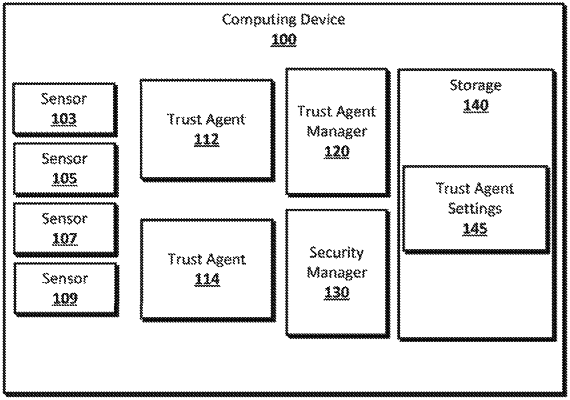| CPC G06F 21/577 (2013.01) [G06F 21/31 (2013.01); G06F 2221/034 (2013.01); G06F 2221/2111 (2013.01)] | 20 Claims |

|
1. A computing device comprising:
at least one processor;
a memory storing program instructions, which when executed by the at least one processor, cause the at least one processor to:
receive a state determination from each of at least one trust agent, wherein the state determination received from each trust agent indicates either a trusted state or an untrusted state;
based on the received state determination from each trust agent, determine a security state for the computing device; and
when the determined security state for the computing device is the untrusted state, cause the computing device to enter a locked state, wherein the locked state requires user authentication before the computing device is allowed to enter an unlocked state.
|